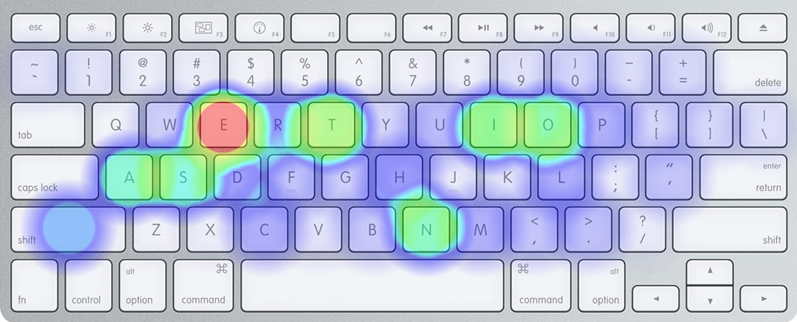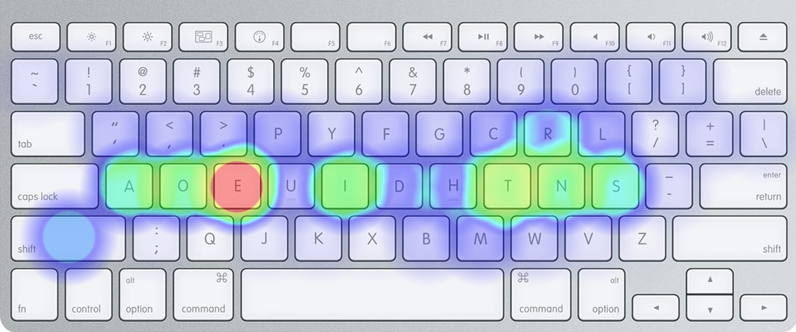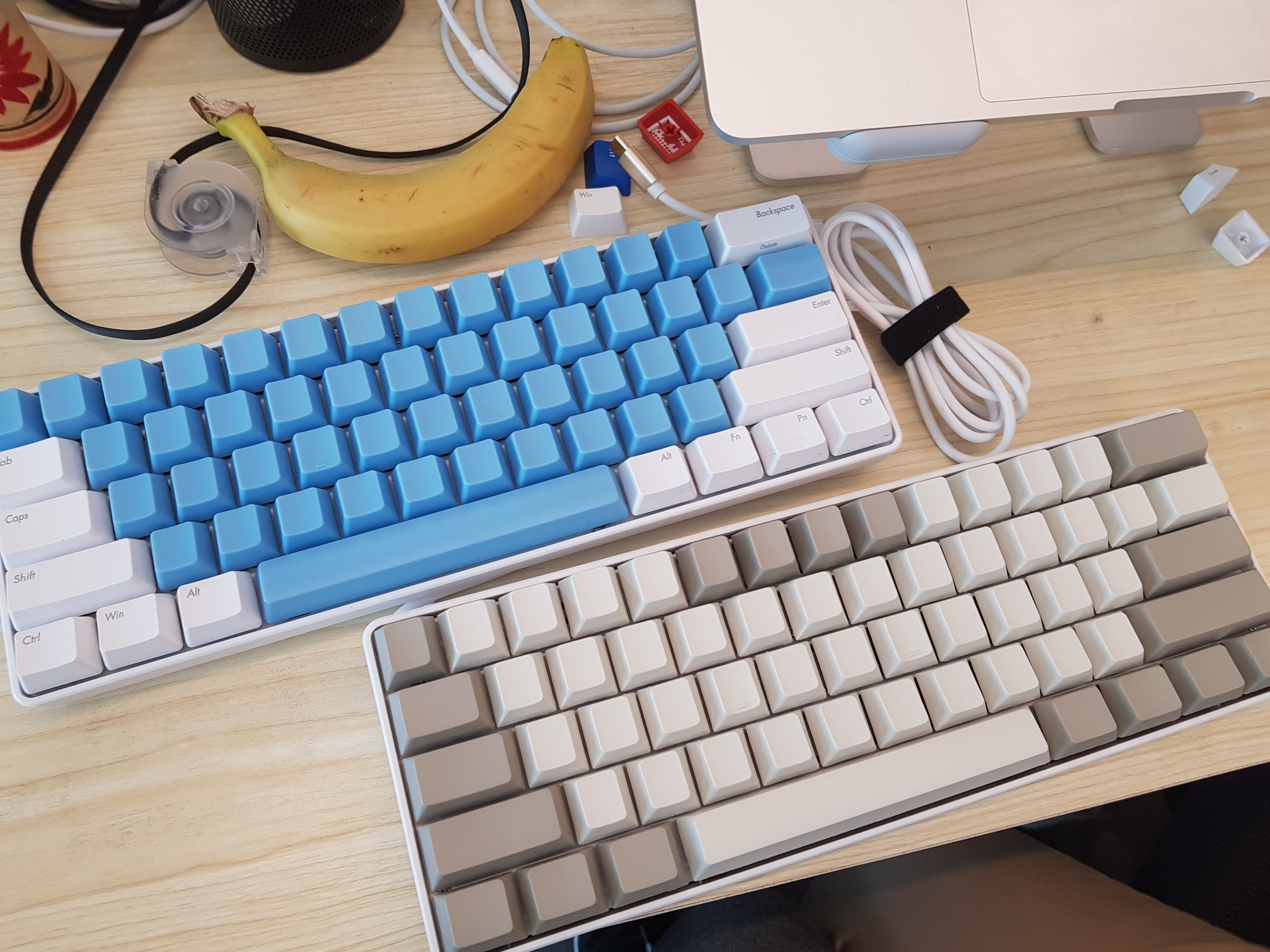Dvorak is a popular keyboard layout alternative to the Qwerty layout, and after typing on Dvorak for 8 years, I certainly can recommend it to anyone want to have a more pleasant typing experience.
First of all you should know that Dvorak and most keyboard layouts is designed for English users. For other languages the experience may vary.
Here are two keyboard heatmaps which compare Qwerty with Dvorak using some of my blog posts as input text (many thanks to patrickwied’s tool).
Qwerty: 
Dvorak: 
The difference may not seem too big to you, but I can tell you that the difference is huge when you’re typing all day:
- Common letters are typed on home row which means less finger movement.
- It require less awkward finger motions. Especially
Ctrl-CandCtrl-V, I can use both hands to do it.
I can’t emphasize more on how much more comfortable it is. You can only feel it after you try it out. On a side note, it also speed up my typing speed:

I know it’s not very fast and many people can type a lot faster, but that’s done casually.
Some caveats though:
- Most online exams are using Qwerty, such as IELTS or TOEFL.
- Can’t type on other people’s keyboard.
- Vim is Qwerty oriented.
The first two can be overcome by also being able to type on Qwerty. And I overcome the last one by writing my own configuration and remap “HJKL” to “HTNS”.
Use gtypist if you want to learn typing on Dvorak. Using a keyboard without letters on it also helps since you won’t be needing to look at your keyboard anyway:

Colemak is another nice keyboard layout. Dvorak can be a little right hand heavy, and Colemak doesn’t seem to have this problem.
In conclusion, just try something other than Qwerty, it may surprise you. Happy typing y’all.